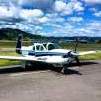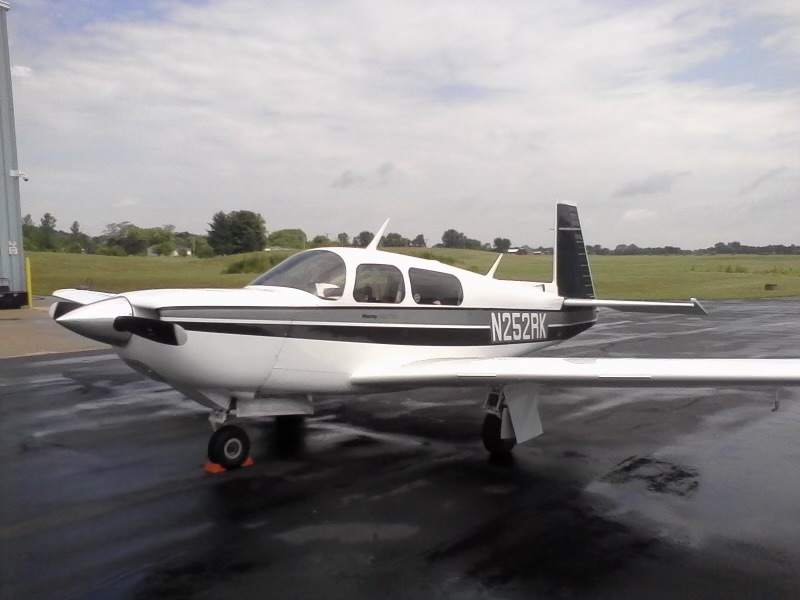-
Posts
5,515 -
Joined
-
Last visited
-
Days Won
27
Content Type
Profiles
Forums
Blogs
Gallery
Downloads
Media Demo
Events
Everything posted by Ragsf15e
-

Flap Retract on Takeoff
Ragsf15e replied to moontownMooney's topic in Vintage Mooneys (pre-J models)
Personally I don’t use that but I would if i was departing close to straight out. I normally fly off a busy, tower controlled airport with shortish parallel runways and terrain on one side, urban area all around (ksff). There’s no way to offset and nowhere to land. It’s uncomfortable. I don’t practice patterns here but my hangar is here. Instead, I turn crosswind as early as possible within reason. That gives me a few more options. At non towered fields I suppose you could but be careful you don’t end up a conflict with someone else who’s expecting you to be in a normal part of the pattern. Also the AIM says we should turn crosswind within 300’ of pattern altitude, so I usually turn there to remain predictable and seen. Always think there could be an airplane without a radio or adsb or transponder operating legally in the pattern with us. If there’s good fields for landing around, I’d fly a normal departure and pattern as much as possible and keep the fields in mind, turn around is pretty dangerous at low altitude without power even if some of the turn is out of the way. -

Flap Retract on Takeoff
Ragsf15e replied to moontownMooney's topic in Vintage Mooneys (pre-J models)
To be fair to the CFI, most are taught this way. Whether it’s right or wrong may depend on the situation. That’s why we all need to use our brains and community experience to develop safe techniques and then think through situations that require different techniques. Sticking to a technique that is good in a particular situation just because that’s what we were taught is a bit too rigid thinking. Maybe the Cfi trained at “All Atp” on a 12,000’ runway with flat terrain and no obstacles in a Piper Arrow. Leaving the gear down while a landing on the runway is possible might be a reasonable technique. It’s also possible that’s exactly what the faa examiner wanted to hear. The best instructors know the difference between technique and procedures and can listen to reasonable arguments to come up with new techniques that apply to different situations. -

Flap Retract on Takeoff
Ragsf15e replied to moontownMooney's topic in Vintage Mooneys (pre-J models)
I think my current retraction technique is similar. I have to admit that when I was a young buck I got to takeoff in front of a (small) crowd once in the Mighty Strike Eagle. Full afterburner was the norm and I planned to be at 30’ and 450kts by the end of the runway for the pull into the vertical. I yanked it off the runway early, maybe 120kts, sucked up the gear and had that sinking feeling... apparently, 50,000lbs of thrust only goes so far. Somehow didn’t scrape it back down (like the F-22 at Fallon a couple years ago). When I cleaned out my shorts later, I remembered that the gear goes through significant gyrations during extension/retraction (Including turning the mains sideways) and increases drag a lot! Oops! -
I’m no mechanic, but that bolt has a castle nut and cotter pin, no? If it’s loose doesn’t that indicate the rod end is wearing out?
-

Flap Retract on Takeoff
Ragsf15e replied to moontownMooney's topic in Vintage Mooneys (pre-J models)
Heck, that probably cost you at least half a knot! Tell me you fixed it?! -

Flap Retract on Takeoff
Ragsf15e replied to moontownMooney's topic in Vintage Mooneys (pre-J models)
I put the gear up quick too! If I blow an engine and land straight ahead, I may get it back down, maybe not. If not, at least I’ll stop fast! I want to get airspeed and altitude quickly after takeoff to increase options. To the OP, I have hydraulic flaps too. My technique is to retract them at 100mph. I feel the “settle” slower than that a bit uncomfortable. -
Interesting. I haven’t heard that and I have a GTX345. What is this patch supposed to do? We’d need one of our avionics folks to answer this.
-
You should probably see weather and traffic on the g3x too from the adsb, does that work?
-
I want to do this! What “power tool” exactly and what type of applicator was on it?
-
Do yourself a favor, get the ADSB traffic and weather working right first before throwing money at XM weather. Try it for a while. If you don’t like the free weather, you can always add on XM. You should not need any new equipment to currently get free weather and traffic.
-
Not sure how the original gauges were on the B-707s, but that’s similar vintage to our 60s Mooney. There’s plenty of good equipment for that these days and it’s not even cost prohibitive, but I wouldn’t wait for the Mooney Corporation to fix it for you...
-
The GTX345 should supply Adsb traffic and weather to the G3x (hardwired) and the gtn750 (Hard wired) and your ipad (via Bluetooth). If it’s not working the avionics shop probably needs to finish setting it up correctly.
-
You and your airplane definitely need to fly more. Something around 60hours a year depending on your prior experience is gonna be required for both of you to remain proficient and mechanically sound. Additionally, I’m all for new techniques, but tell me more about this “controls full aft” thing on normal takeoff and “getting more altitude quickly”... generally you want to accelerate in a normal takeoff attitude if there’s room because an engine failure at low speed and high pitch angle is less likely to end happily than one at a slightly lower altitude but higher airspeed and lower pitch.
-
In my opinion, a minimal oil leak that’s been stable for a good long time is not reason to open the can of worms involved in any type of MOH. I’m as anal as anyone out there, but clean it religiously and get use to it, then enjoy your engine for a couple hundred more hours until it actually needs OH. Just my 2 cents.
-
Actually I agree with you and can see only minimal, almost immeasurable gains in efficiency and/or LOP operation. They are there but probably not worth installation on their own. However, buying a new “mag” for $1200 that is supposed to last 2000hours maintenance free is a cost saver compared to the traditional mags cost, maintenance and overhaul over that same time. It’s still backed up by a traditional mag if it doesn’t work out. No way I would put two on right now, but the maintenance cost savings is nice if it pans out and I get the additional benefit of the admittedly small efficiency gain.
-
Yes, the 50 year old “traditional” fuel sensor systems are not good, however, any of the newer EIS systems (JPI 900, 930, Garmin, etc) can be paired with digital CIES fuel senders for an exact reading. I have a JPI 930 paired with the original (overhauled) sensor and it’s accurate to within a gallon and backed up by the separate fuel flow totalizer.
-
I think lyc is piggybacking on Surefly though... don’t they offer an electronic mag with some of their engines that’s simply a rebranded SF? I like my SF so far, but time will tell...
-
Just so you know... purchase price plus/minus $10-15k doesn’t even scratch the surface after a couple years ownership. Owning an airplane is not like buying a car, most of the cost is NOT the purchase, it’s the yearly expenses.
-
I agree, and yet Emag hasn’t been able to get theirs certified yet.
-
Agreed, those are an option, but if I was using it as a failsafe for my electric mags I wouldn’t want it connected to anything else in the electrical system. A total electrical failure is bad enough without the engine going silent for lack of spark! A PMA type arrangement self contained within the mag is probably the safest bet, but then we’re pretty much back to our traditional mags.
-
That’s how Emags works. Only it’s not yet certified.
-
So far only electroair and Surefly are approved and neither self generate. EMag has self generating mags but only experimental. They’ve been taking many years to try to bring it to certification. There are experimental guys flying with 2 Emags, but not for us yet.
-
Personally, I had both mags up for 500 hour service and I overhauled one and got a Surefly on the other.
-
Neither of the current approved electronic mags supplies its own power or has a backup power source. Too many things can go wrong in your electrical system to count on it. If the emags ever get certified with their own power, then maybe but they’ve been trying for a long time. They sound like BK at this point.


